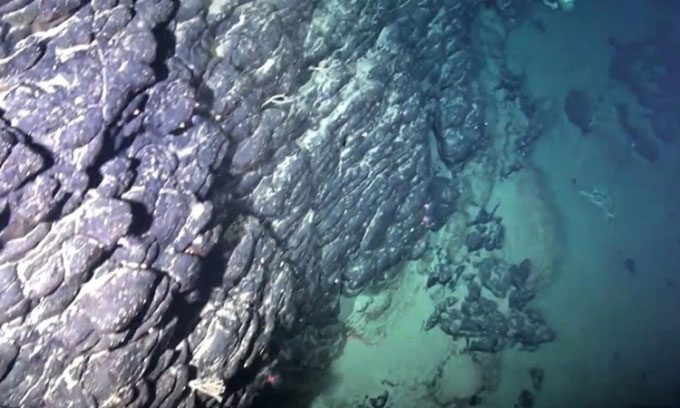A massive ancient island now lies beneath the Atlantic Ocean, potentially containing a vast reserve of rare earth elements and other valuable minerals.
Known as the Rio Grande Rise (RGR), this submerged continental plateau formed as a volcanic ridge around 40 million years ago and was once a vast tropical land covered in vegetation. An international research team led by Priyeshu Srivastava from the University of Sao Paulo announced the discovery in the journal Nature, as reported by IFL Science on March 17.

The Rio Grande Rise island lies at a depth of about 2,000m below the water’s surface. (Photo: IO-USP).
Located approximately 1.20 km off the coast of Brazil, RGR covers around 150,000 km2 of seabed at depths ranging from 700 to 2,000 meters. The hypothesis of a volcanic ridge possibly being an island was first proposed in 2018 and has now been confirmed through the analysis of sediment samples dredged from the western part of RGR.
Evaluating the mineral characteristics, geochemistry, and magnetic properties of the sediments, the research team found that the samples were primarily composed of red clay, consistent with the type of “terra roxa” commonly found in many areas of São Paulo state. Within the soil, the researchers identified several minerals typically found in volcanic rock variants, including oxidized magnetite, hematite, goethite, and kaolinite.
These findings reveal that the clay formed as a result of the weathering of volcanic rock under warm and humid conditions. Based on their analysis, the research team concluded that RGR accumulated rare earth elements throughout the Neogene period, lasting until about 35 million years ago, characterized by tropical conditions.
Previous studies have also indicated that the submerged island is rich in valuable minerals such as cobalt, lithium, and nickel, along with precious rare earth elements like tellurium. As these materials are key components in a range of new technologies aimed at reducing fossil fuel consumption, the extraction of natural resources at RGR has garnered significant interest.
Situated in international waters, RGR is currently managed by the International Seabed Authority, although the Brazilian government has submitted a request to extend the continental shelf to the island. In reality, this request is unlikely to be approved, as the United Nations Convention on the Law of the Sea (UNCLOS) stipulates that a country cannot own more than 370.4 km beyond its coastline.


















































